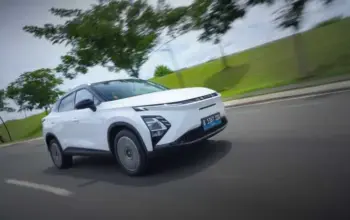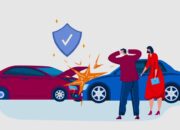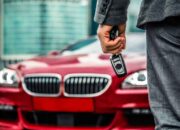Uzone.id – Various new trends make the insurance industry increasingly develop, so changes are very fast to follow. So, understanding the latest trends is very important for consumers and industry leaders to ensure they receive the best service.
Motor vehicle insurance practitioner, Yohanes Windy said, Car insurance isn’t just about protecting your car, it’s also about protecting yourself and others on the road.
And now, as we head into mid-2024, there is some in-depth analysis of key trends in the auto insurance industry.
1. Increased Technology Adoption:
Advanced technologies such as telematics, Internet of Things (IoT), and Artificial Intelligence (AI) are increasingly being applied in the car insurance industry. This aims to increase efficiency, accuracy and personalization of insurance services. For example:
- Telematics: Telematics devices installed in cars can monitor driving behavior, such as speed, braking, and acceleration. This data is analyzed to determine the driver’s risk level so that they can offer more appropriate insurance premiums.
- IoT: IoT sensors are installed in cars to detect various conditions, such as tire pressure, engine temperature and potential damage. This information can help prevent accidents and provide early warning to drivers.
- AI: AI is used to analyze data from accident claims to identify patterns and trends. This allows insurance companies to make more accurate underwriting decisions and develop more effective accident prevention programs.
“Technologies such as telematics and AI are revolutionizing the vehicle insurance industry, enabling fairer premiums and more personalized service,” said Indrajaya Wardhana, Motor Vehicle Insurance Expert
2. Growth in Usage Based Insurance (UBI):
Usage Based Insurance (UBI) is currently becoming increasingly popular, because it can offer customers fairer and more transparent insurance premiums. Unlike traditional insurance which is based on static factors such as age and type of vehicle, UBI takes driving behavior into account.
Some of the UBI features that have been implemented in the car insurance industry include:
- Pay-as-you-drive: Premiums are calculated based on the distance the customer travels.
- Pay according to how you drive: Premiums are calculated based on driving style, such as how often you make hard stops and how often you break the speed limit.
- Time-based UBI: Premiums are based on driving time, with higher rates during peak hours or evenings.
3. Focus on Accident Prevention:
Insurance companies are starting to invest in creating programs and technology aimed at preventing accidents, such as:
- Automatic emergency braking (AEB): This system allows the car to brake automatically to avoid a collision.
- Lane Departure Warning (LDW): This system will warn drivers if they leave the lane without turning on the turn signal.
- Blind spot monitoring (BSM): This system detects vehicles in the driver’s blind spot and provides a warning.
A number of technologies to prevent these accidents will not only help reduce insurance claims but also improve the safety of drivers and other road users.
4. Increasing Demand for Electric Vehicle Insurance:
The increasing popularity of electric vehicles is driving demand for special insurance for electric cars which have different risks and needs from conventional cars.
There are several differences to consider for electric vehicle insurance:
- Fire risk: Lithium-ion batteries in electric vehicles have a higher risk of fire than gasoline vehicles.
- Battery range: The range of electric vehicle batteries is still limited, so it is necessary to consider claims related to running out of power on the road.
- Charging technology: Damage to a charging station may also be part of insurance coverage.

5. The Rise of Gig Economy Insurance:
The gig economy has created a need for insurance specifically designed for ride-hailing and delivery drivers.
Characteristics of gig economy insurance:
- Accident and injury protection: Covers medical costs and loss of income due to accidents while working.
- Third party damage coverage: Covers damage to other vehicles and covers property damage caused by the driver while working.
- Comprehensive insurance: Offers broader coverage, including fire, theft and vandalism.
6. Cybersecurity Challenges:
Connectivity is a superior feature in today’s modern cars and The use of personal data in car insurance increasingly poses significant cybersecurity risks.
- Hackers can target insurance systems to steal customers’ personal data, make false claims, or even take control of vehicles.
- Insurance companies need to increase their security measures to protect customer data from hacking and theft.
7. Important Role of Big Data and Analytics:
Insurance companies today are already using big data and predictive analytics to better understand risk and driver behavior.
This allows them to offer more personalized and accurate products and services.
8. Shift Towards Digital Services:
Customers increasingly want an all-digital, easily accessible insurance experience.
Therefore, insurance companies are investing in digital platforms and smartphone applications to provide more convenient and efficient services.
“Usage-based insurance offers a more transparent and fair solution for drivers, encouraging safer driving behavior,” said economist and insurance expert Basukarno Harji Saputro.
9. Increase Awareness of Environmentally Friendly Insurance:
Customers are increasingly interested in insurance products that support environmentally friendly practices, such as offering discounts on fuel-efficient or electric vehicles.
The auto insurance industry continues to grow rapidly, driven by technological advances, changing consumer behavior and global trends.
Understanding these trends is critical for customers to make informed decisions in choosing their auto insurance and helps industry players adapt and thrive in the future.
















